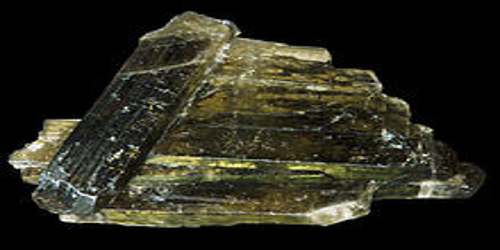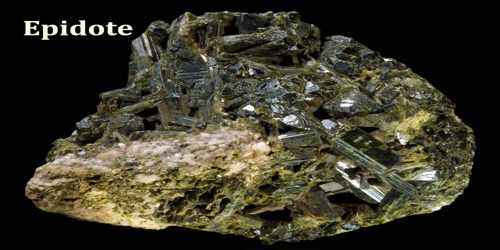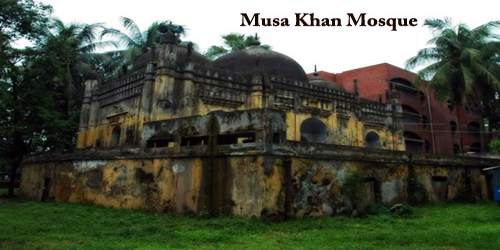Epidote
Definition
Epidote is a yellowish-green or blackish-green monoclinic mineral. Epidote occurs as formless grains or as prism-shaped crystals, and is found in limestones that have undergone slight metamorphism or in igneous rocks. Its chemical formula: Ca2(Al, Fe)3(SiO4)3OH. The finest and most desirable form of this mineral is in delicate elongated crystals that are extremely lustrous and often interconnected. This form is highly treasured by collectors and creates one of the finest mineral showpieces.

The name, due to Haüy, is derived from the Greek word “epidosis” (ἐπίδοσις) which means “addition” in allusion to one side of the ideal prism being longer than the other. Structurally, the epidote group consists of chains of AlO6 and Al4(OH)2 octahedra linked by independent SiO4 and Si2O7 groups. The A atoms are in eightfold coordination between the chains. Members of the epidote group include epidote (A = Ca, B = Al,Fe), clinozoisite (A = Ca, B = Al, monoclinic), zoisite (A = Ca, B = Al, orthorhombic), piemontite (A = Ca, B = Al,Mn,Fe), and allanite (A = Ca,Mn, Ce, B = Fe,Al).
A rock composed of quartz and epidote is known as epidosite. Well-developed crystals are found at many localities: Knappenwand, near the Großvenediger in the Untersulzbachthal in Salzburg, as magnificent, dark green crystals of long prismatic habit in cavities in epidote schist, with asbestos, adularia, calcite, and apatite; the Ala valley and Traversella in Piedmont; Arendal in Norway; Le Bourg-d’Oisans in Dauphiné; Haddam in Connecticut; Prince of Wales Island in Alaska, here as large, dark green, tabular crystals with copper ores in metamorphosed limestone.
Occurrences and Properties of Epidote
The epidote group occurs as secondary minerals in low-grade regionally metamorphosed rocks where its occurrence is used as an indicator of metamorphic grade. Epidote occurs in several different environments. It is found in hornfels and skarns in contact metamorphic rocks, and in metamorphosed limestone and in schists in regional metamorphic rock. It is also found in igneous rock in basalt and diabase, and is occasionally found in granite pegmatites.

A rock composed of quartz and epidote is known as epidosite. Well-developed crystals are found at many localities: Knappenwand, near the Groávenediger in the Untersulzbachthal in Salzburg, as magnificent, dark green crystals of long prismatic habit in cavities in epidote schist, with asbestos, adularia, calcite, and apatite; the Ala valley and Traversella in Piedmont; Arendal in Norway; Le Bourg-d’Oisans in Dauphin‚; Haddam in Connecticut; Prince of Wales Island in Alaska, here as large, dark green, tabular crystals with copper ores in metamorphosed limestone.
Epidote is usually in long slender prismatic crystals; also in thick tabular crystals. Crystals are sometimes striated and may have interesting wedge-shaped terminations. They also may have etchings or growth layers, and may contain late-growth small crystals layers growing upon a larger crystal. Also columnar reticulated, acicular, radiating, in fan-shaped and wheat sheaf crystal groups, and in long, slender fragile interconnected crystal groupings. May also form as a thin microcrystal crusting and may be massive.

Uses of Epidote
Epidote has no significant use as an industrial mineral and has only minor use as a gemstone. Most of the faceted stones produced are purchased by gem and mineral collectors.
Unakite is a popular rock used by lapidaries to make beads, ornamental objects, and cut into cabochons. It is considered to be a semiprecious stone. The bright pink and pistachio green colors are very unusual and attract attention. Unakite is popular as a tumbled stone. A small amount of epidosite is also cut into cabochons.
Reference:
















